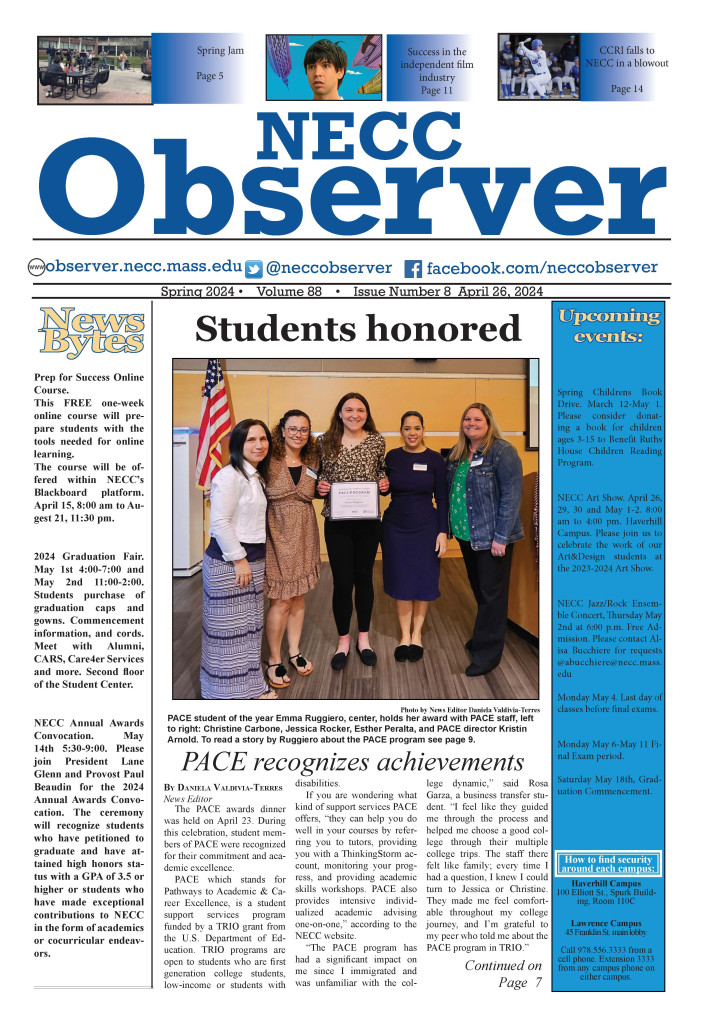“Talking about the likelihood of flooding is a tricky thing,” said Julie Busa, an ecologist. “As we see more of these [climate change related] events, we are expecting to see the same level of floods that you’d see every 500 years, every 100,” she said.
In a virtual meeting on March 24, local residents joined to ask questions and voice opinions about the removal of a dam from Little River in downtown Haverhill. Also in attendance was Iain Sidor, president of NECC’s Environmental Club.
The virtual forum was open to the public. It began with a presentation about what testing is required before deciding if the dam could be removed.
The dam, next to the now empty mill building in Lafayette Square, has been in place since about the year 1,800 said Haverhill Mayor James Fiorentini. It was most recently used 18 years ago, when the building was still operating as a dye factory, he said.
The city is planning to remove the dam because it could reduce flooding risk, make the area more attractive, and positively affect aquatic wildlife, said Busa. Along the river, FEMA maps show the area as being at a higher annual risk of flooding, which will likely increase due to climate change.
The main concerns were that the river sediment may be contaminated with hazardous material, and that nearby bridge supports could be affected by removing the dam, said Busa. This information can be found here, on Haverhill’s webpage about the project.
Sidor, a 19 year old New Hampshire resident and NECC Business Management major, asked questions about the project’s effect on the environment.
In response, engineer Phil Moreschi said, “the whole process (of removing a dam) is extremely regulated.” He said that if there were contamination in the river sediment, cleaning it up is a part of the process. That way, “contaminants don’t move downstream,” he said.
Sidor said that he feels good about them following such safety protocols. “I’m glad they addressed concerns … and are looking into ways of dealing with it,” he said.
Some people voiced other concerns about what the removal could do. One Haverhill resident was worried about what would happen to fish that currently live in it.
Addressing this subject, Moreschi said “the river will become shallower.”
On the other hand, responding to a similar question, Busa said “as a trained ecologist, it’s always better [to] have a free flowing river that goes where it wants to go … It is always going to be positive in terms of the environment.”

